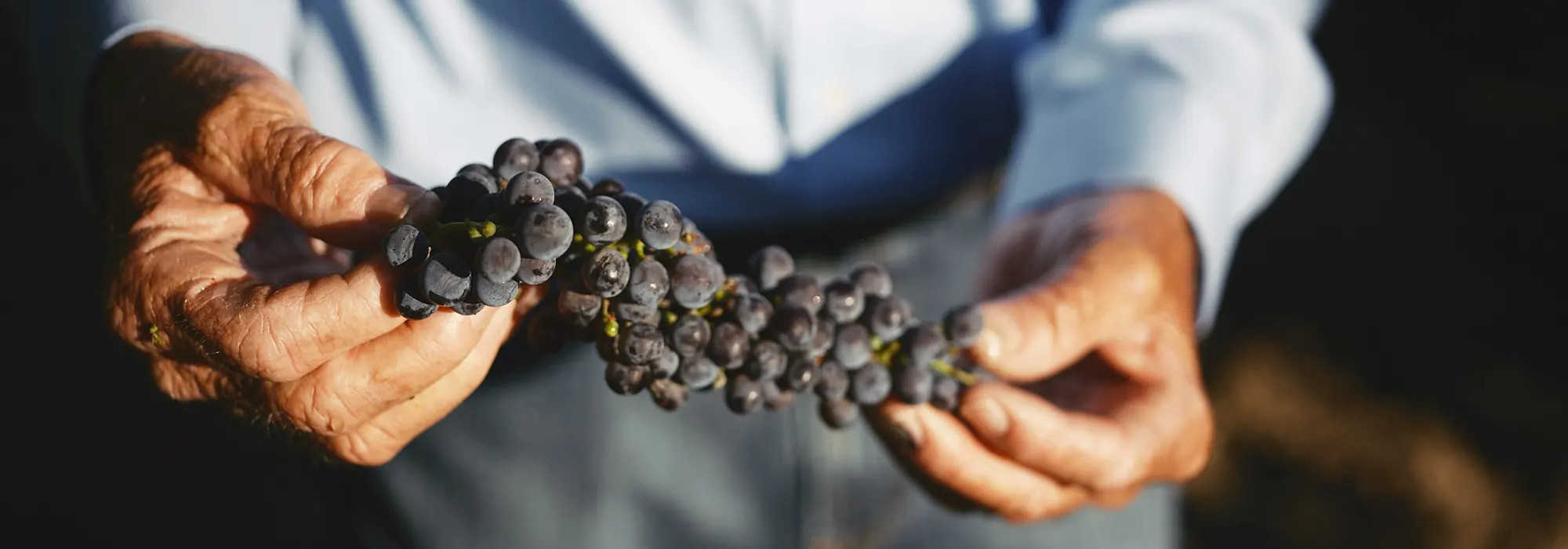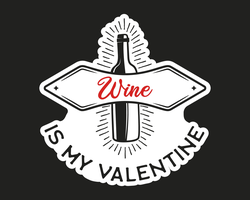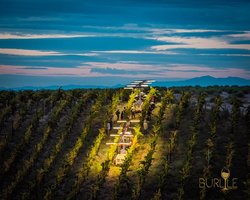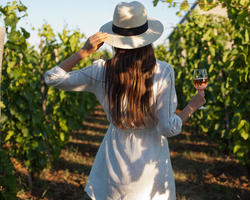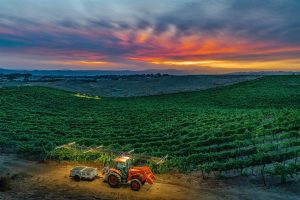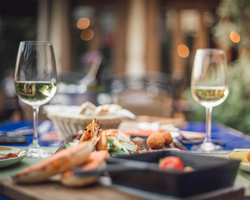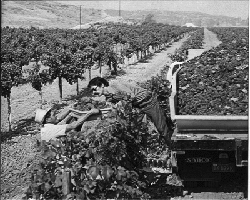This International Women’s Day, We Celebrate the Inspiring Women of Temecula Valley Southern California Wine Country
Temecula Valley Southern California Wine Country wouldn’t run without the immensely talented women that make the region so special. From tasting room staff, to winemakers and assistant winemakers, to women in leadership, our Wine Country is jam packed with some fierce and fiery female power. The theme for this year’s International Women’s Day – Tuesday, March 8 – is “Gender equality today for a sustainable tomorrow.” In celebration, we caught up with some of our favorite Wine Country women to and to ask them what this means to them, and learn more about their journey in wine.
These interviews may have been edited for brevity and/or clarity.
Emily Bloom, Enologist and Vineyard Coordinator, South Coast and Carter Estate Wineries.

Emily started her wine career as an intern at South Coast Winery in 2015, and has since expanded her role to work for South Coast’s sister winery – Carter Estate – as well. She grew up in San Diego, and always loved the climate of Southern California (what’s not to love?). “We have the ability to grow many different fruits and vegetables,” she says. “Including grapes!”
TVWA: What was the journey like for you to get to where you are today in your career?
EB: Having always been interested in agriculture, I attended Iowa State University for horticulture and worked on many different agricultural operations from tropical flowers to blueberries. I have found wine production to be creative and fun, and I cannot imagine myself in any other industry. Continued education is so important for professional growth. I have a certificate in Viticulture form Washington State University and will be starting WSET Level 4 this spring.
TVWA: The theme for this year’s International Women’s Day is “Gender equality today for a sustainable tomorrow” – What does this mean to you?
EB: A sustainable future in the wine industry is not possible without the inclusivity of those who identify as female, non-binary, and people of color. The recognition of inclusivity in a male dominated industry is crucial to the success and growth of the industry. Bringing different backgrounds and experiences to the table offers ways to improve and diversify the wine industry. We need to remove any existing barriers to enter the wine business and open paths for a diverse world of wine making. Just as wine should be enjoyed by all, a career in the wine industry should be accessible to all.
TVWA: What sorts of things do you do to lift other women up and support them personally and/or professionally?
EB: I very much enjoy mentoring our interns who work harvest, as well as leading the tasting room staff to shadow our production work. It is rewarding to be able to teach and mentor, and it gives me continued enthusiasm for our wine industry.
TVWA: Tell us something that many people would be surprised to find out about you!
EB: Outside of wine, I love to machine knit and sew! I made matching knit beanies for the production crew a couple years ago which was a lot of fun! Being able to create things brings such a feeling of joy and accomplishment.
Olivia Bue, Winemaker, Robert Renzoni Vineyards
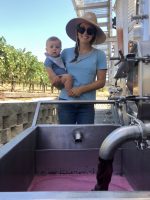
An Encinitas native, it’s no surprise Olivia returned to Temecula in search of a winemaking position after graduating from UC Davis with a Viticulture and Enology degree, and working for Molly Dooker in McLaren Vale, South Australia, and Cakebread Cellars in Napa Valley. Olivia was hired and mentored by longtime Temecula Valley winemaker Gus Vizgirda in 2012, which allowed her to take the next step as Assistant and now Head Winemaker at Robert Renzoni Vineyards, where she has been for the past 8+ years.
TVWA: How long have you been in Temecula Wine Country? What drew you to the region?
OB: What drew me to Temecula Valley was the possibility to grow with the region and make an impact in the region’s accomplishments. Our main goal in Temecula Valley is to get recognized for our quality wines beyond just southern California. If I can be part of that movement, the decision to come South 10 years ago was beyond worthwhile.
TVWA: How did you get to where you are today in your career?
OB: I grew up surrounded by incredibly strong women. My mom is a breast cancer survivor and badass woman. Her positive attitude toward life and not allowing anything to get in the way of achieving your dreams was engrained in me at an early age. I never felt inferior as a woman in a male-dominated industry. I was more insecure of my age than gender in my earlier 20s. I was learning how to make wine in school before I was legal to drink it! I truly fell in love with the science and production of winemaking before the actual taste.
TVWA: The theme for this year’s International Women’s Day is “Gender equality today for a sustainable tomorrow” – What does this mean to you?
OB: I’ve chosen to not let discrimination deter me from achieving my goals. I’ve been lucky that being a woman has not held me back in any way. At Robert Renzoni Vineyards, the team has always advocated for me being a woman winemaker. Surrounding yourself by people who uplift and support you is key! What I love about wine is I’m judged on the final product, nothing else.
TVWA: What sorts of things do you do to lift other women up and support them personally and/or professionally?
OB: I know many talented woman winemakers with their own personal labels, some of whom I went to school with at UC Davis, and I make sure to support their product and stock my wine fridge with their new releases.
Also, after becoming a mom 3 years ago, juggling work and family was/is challenging. Staying in touch with other women winemakers who recently expanded their families has been so motivating. It’s not easy working full time while being a mother of 2, especially during harvest, but it’s important to me for my kids to see what hard work and drive looks like. I’m so enthusiastic and passionate about making wine. It brings joy to my life which ultimately makes me a better mom. Early morning pump-overs will be part of the harvest norm for them. Can’t wait to put them to work!
TVWA: Tell us something that many people would be surprised to find out about you!
OB: I grew up as a competitive gymnast; back flips were part of my everyday.
Patricia O’Brien, Vice President of Sales and Operations, Danza del Sol and Masia de la Vinya Wineries
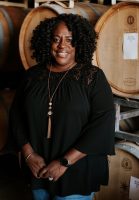
Patricia and her husband moved to Temecula from Carlsbad 19 years ago when she was pregnant with their second child. After leaving her corporate job to be a stay-at-home mom, she quickly realized she missed everyday adult interactions. Another mom pal of hers worked at a winery and encouraged her to apply for a position as Wine Club Manager. She got the job and has been in the business ever since.
TVWA: The theme for this year’s International Women’s Day is “Gender equality today for a sustainable tomorrow” – What does this mean to you?
PO: As a mother of two very strong, sassy, smart and independent girls, I support gender equality now because I want them to have the same opportunities in sports, education, and careers as our son. Working towards gender equality, I believe will make our future generations so much stronger. ‘Cause let’s face it; women get things done!
TVWA: What sorts of things do you do to lift other women up and support them personally and/or professionally?
PO: Personally, I try to set an example for what it means to be present in not just my personal life but professional too. My mother instilled in my siblings and I the Maya Angelou quote, “People will forget what you said, people will forget what you did, but people will never forget how you made them feel.” So, I’m a firm believer a person who feels appreciated will always do more than expected. Here’s a few things I do to lift other women in my personal/professional life:
- Professional Development: At Danza del Sol Winery and Masia de la Vinya Winery we have a professional development program that assist employees who are interested in expanding their wine or wine business knowledge by participating in WSET or Sommelier certification. We also pay for our staff to participate in the TVWA CHIP (Certified Hospitality Industry Professional) program.
- Friendships: I also take the time to build friendships with other “women of wine” in Temecula. Some of the best wine industry leaders I know are women who come from this Valley! I appreciate their friendship, honesty, and value their advice. I love that I can call them any time to seek their counsel or just to meet up for lunch or a glass of wine. There are so many to name… you know who you are.
- Appreciation: I’m a firm believer that a person who feels appreciated will always do more than expected. So, I try my best every day to incorporate one of these phrases in my personal and professional life:
- “Thank you, I appreciate you.”
- “Appreciate that, thanks.”
- “I appreciate the time it took for you to __________.”
You should try it and see what results you get!
TVWA: Tell us something that many people would be surprised to find out about you! This could be a unique skill or hobby, a funny anecdote, language spoken, etc.
PO: For as strong and as badass as I’m perceived to be, I am a sucker for Hallmark Movies. I know right, me? Yep!!! Nothing takes my mind off the stresses of life more than a nice bottle of wine, gourmet popcorn and a predictable, over the top, sappy, two-hour Hallmark movie! And don’t get me started about Countdown to Christmas Hallmark movies. Don’t judge me!
Christina Falik, “Chief Wineaux,” Gershon Bachus Vintners

Christina came to Temecula Valley 17 years ago from Laguna Beach, where she was raising her son with husband Ken, and running their marketing company. Being from New York, they moved inland to escape the coastal fog and enjoy the sunshine. After purchasing their 21 acres of land perched atop of a hill with “Views like Tuscany,” Christina says the wine bug hit her.
TVWA: The theme for this year’s International Women’s Day is “Gender equality today for a sustainable tomorrow” – What does this mean to you?
CF: Equality in general is vital for the growth of our society. For each and every person looking for a job, or job advancement, it is essential that their talent is recognized and the pay to be the same regardless of gender, creed, or race. Anything less, is unacceptable.
TVWA: What sorts of things do you do personally and/or professionally to lift other women up and support them personally and/or professionally?
CF: I mentor women who have little or no experience. I will take my time to teach them a trade, show them how I manage in the world today. I stand alongside my friends and associates in their time of need and offer my help and support whenever they struggle. I also believe that being positive is essential, and sometimes that trait needs to be encouraged. Wine Production has made great strides for women and the opportunities are there for those who are not afraid of the work or the hours.
TVWA: Tell us something that many people would be surprised to find out about you! I used to be shy and I am a Pollyanna. I look at the world through rose-colored glasses. I am pretty open these days, but it was a struggle for me as a younger person. I was not always outspoken, and I certainly did not like public speaking. It took a lot of time to find my voice and pitch.
Wendy Holder, VP of Marketing, Wilson Creek Winery

Wendy has been in Temecula Valley for a whopping 43 years! The things she must have seen! She began her career with Rancon Financial, where she worked for 14 years with Dan Stephenson, someone she desicribes as “An entrepreneurial visionary who contributed to the early development of “Rancho California” now known as Temecula.” She credits him for introducing her to the marketing profession, and she has since grown her experience in advertising, hospitality, and entrepreneurship herself. In 2009, she joined Wilson Creek to work alongside Bill Wilson in growing the iconic Temecula winery.
TVWA: The theme for this year’s International Women’s Day is “Gender equality today for a sustainable tomorrow” – What does this mean to you?
WH: I am pleased to see how the roles and positions women now occupy in Temecula Wine Country have grown dramatically over the years. I feel the contribution of women has never been greater and their growing success has come directly from hard work, dedication, and passion for the wine industry in the valley. These key qualities are essential in any workplace and have been the best method of overcoming gender inequalities.
TVWA: What sorts of things do you do to lift other women up and support them personally and/or professionally?
WH: I love to share my knowledge and experience by supporting, mentoring, teaching others and building trust. Confidence encourages initiative. Initiative brings personal and professional growth. I firmly believe women who commit themselves fully to their profession or personal endeavors, seek to always learn and grow, and remain steadfast and not dissuaded by difficulties, will always excel.
TVWA: Tell us something that many people would be surprised to find out about you!
WH: I was actively involved in 4-H in my youth, showing horses, sheep, goats and dogs. I became the Riverside County Horse Show Champion when I was fifteen years old. It was during these years that I was mentored by one of my 4-H leaders, Audrey Cilurzo. Many know Audrey as one of the pioneers of Temecula Wine Country, a very intelligent and caring person with a strong business sense and a consummate professional. It was with Audrey that I poured my first glass of wine at the balloon and wine festival over 32 years
Check back for part 2 of this story on Tuesday, March 8th, International Women’s Day, as we continue to celebrate our fabulous women in wine.

